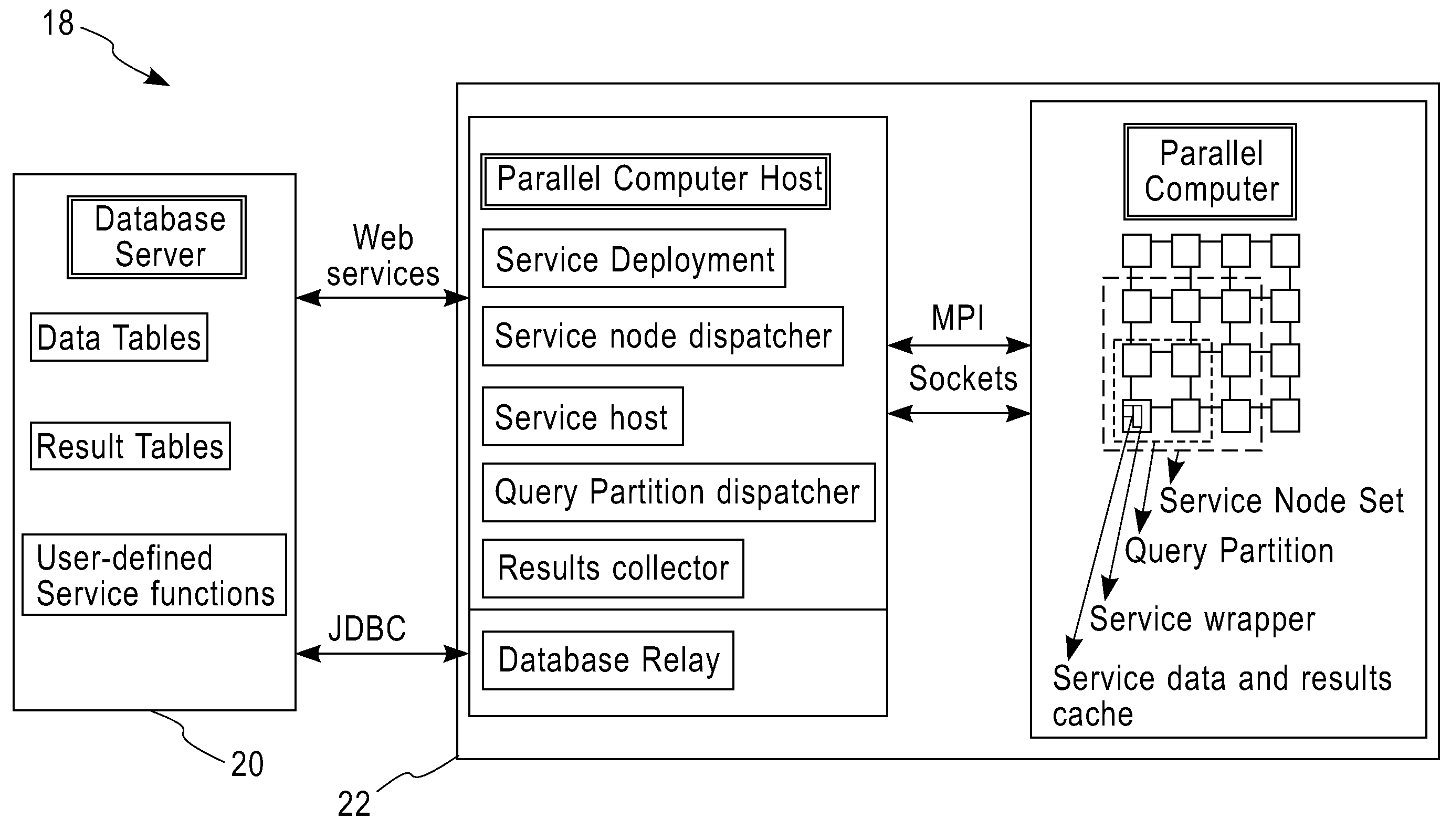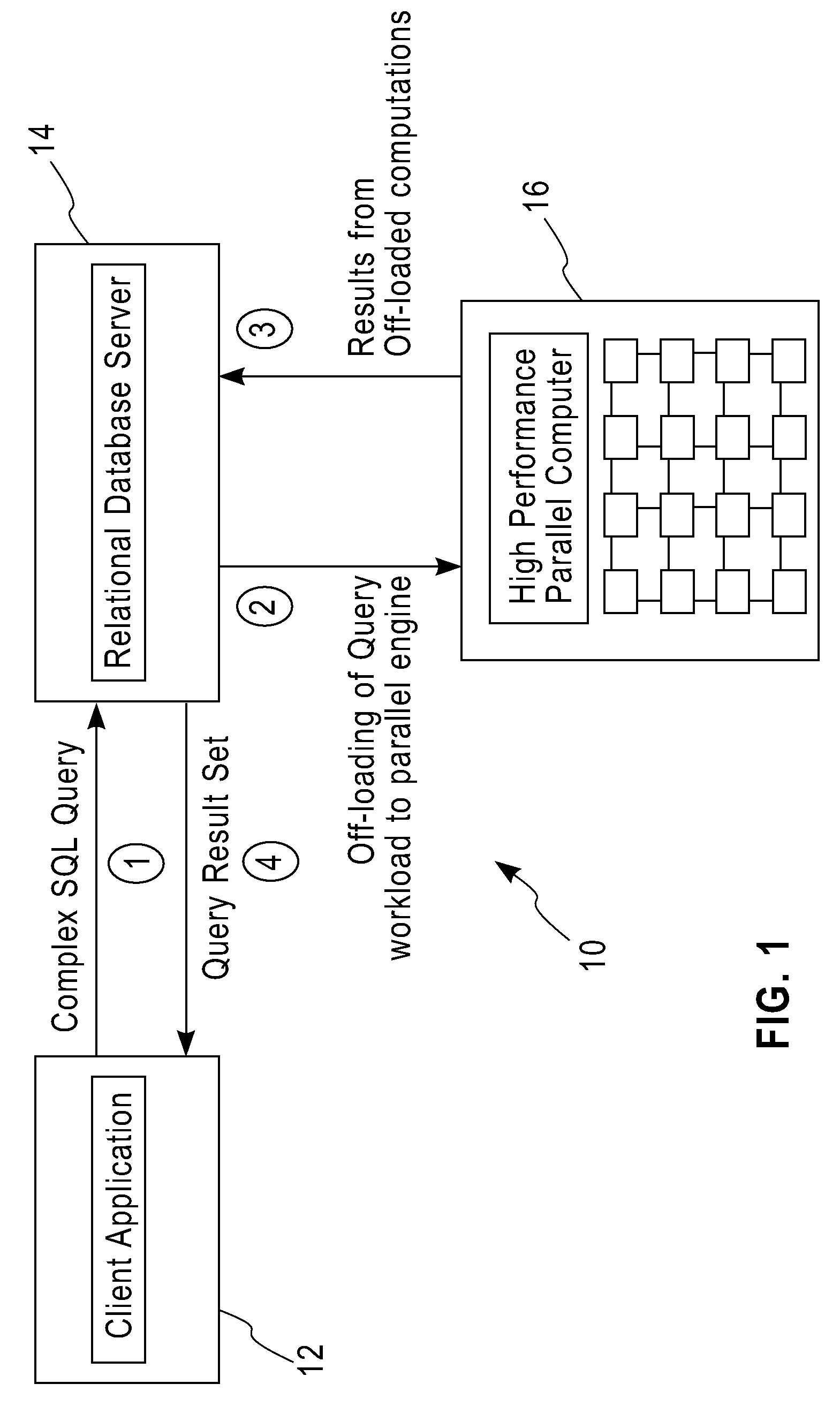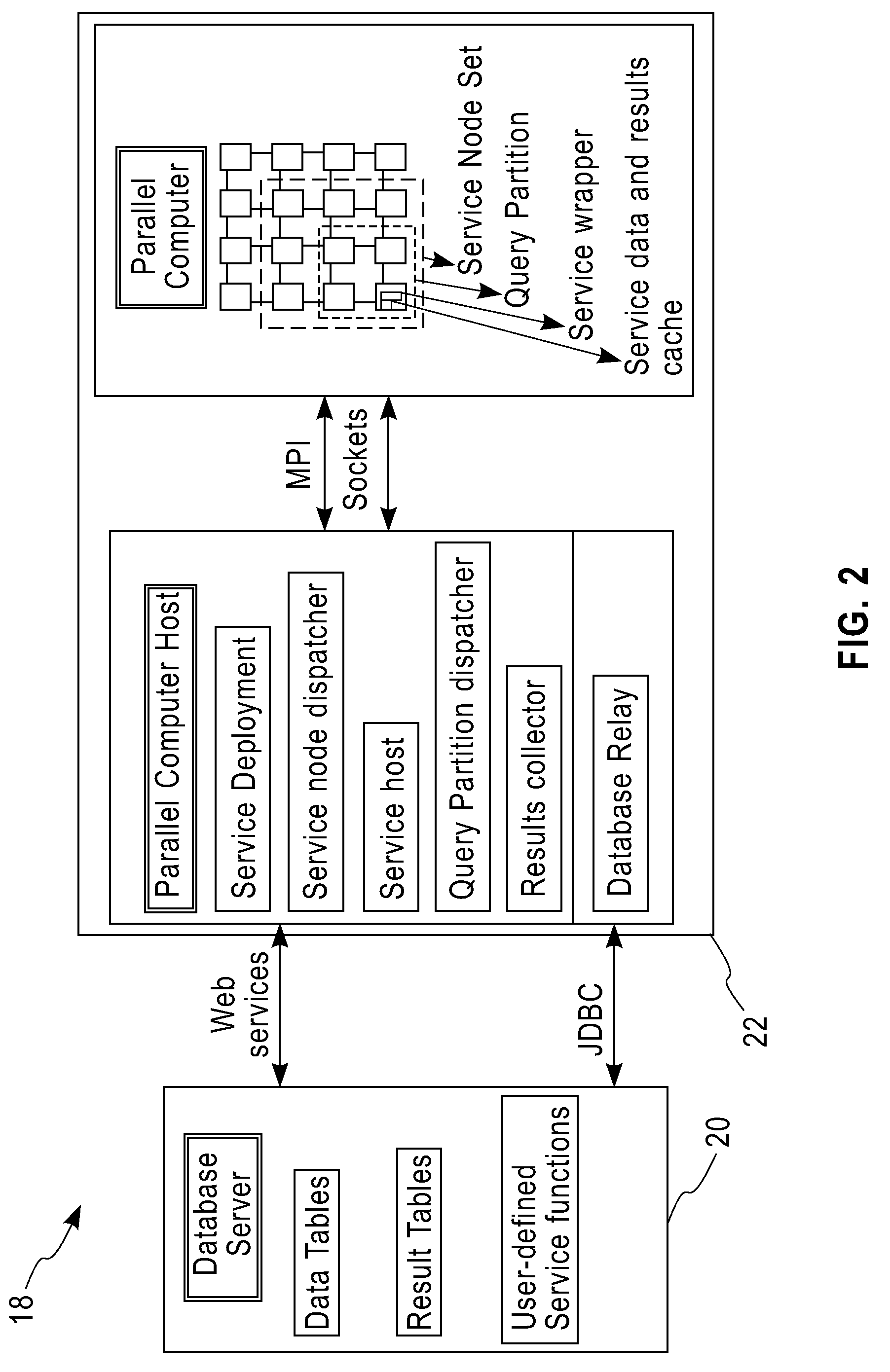System and method for executing compute-intensive database user-defined programs on an attached high-performance parallel computer
a database and parallel computer technology, applied in computing, instruments, electric digital data processing, etc., can solve the problems of limited parallelism that can be used for the execution of these user-defined programs, large associated processing requirements for executing compute-intensive user-defined programs on the database server, and inability to accept many kinds of user-defined functions. achieve the effect of improving query performan
- Summary
- Abstract
- Description
- Claims
- Application Information
AI Technical Summary
Benefits of technology
Problems solved by technology
Method used
Image
Examples
Embodiment Construction
[0036]The present invention generally relates to the off-loading of the compute-intensive user-defined operations from a database server to an attached high-performance parallel computer. The following description is presented to enable one of ordinary skill in the art to make and use the invention, and is provided in the context of a patent application and its requirements. Various modifications to the preferred embodiment and the generic principles and features described therein will be readily apparent to those skilled in the art. Thus, the present invention is not intended to be limited to the embodiment shown but is to be accorded the widest scope consistent with the principles and features described therein.
[0037]To describe the features of the present invention in detail, refer now to the following discussion along with the accompanying figures.
[0038]FIG. 1 (numerals 10-16) is a high-level schematic of the proposed invention wherein a client application issues a SQL Query com...
PUM
 Login to View More
Login to View More Abstract
Description
Claims
Application Information
 Login to View More
Login to View More - R&D
- Intellectual Property
- Life Sciences
- Materials
- Tech Scout
- Unparalleled Data Quality
- Higher Quality Content
- 60% Fewer Hallucinations
Browse by: Latest US Patents, China's latest patents, Technical Efficacy Thesaurus, Application Domain, Technology Topic, Popular Technical Reports.
© 2025 PatSnap. All rights reserved.Legal|Privacy policy|Modern Slavery Act Transparency Statement|Sitemap|About US| Contact US: help@patsnap.com



